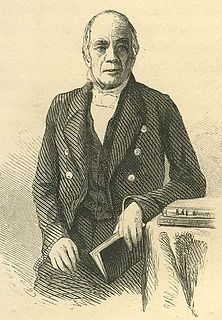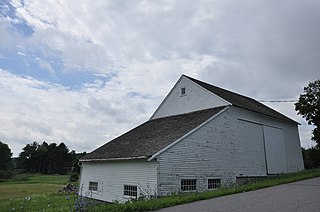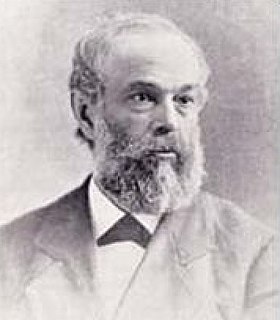
Addison County is a county located in the U.S. state of Vermont. As of the 2020 census, the population was 37,363. Its shire town is the town of Middlebury.

Middlebury is the shire town of Addison County, Vermont, United States. As of the 2020 U.S. Census, the population was 9,152. Middlebury is home to Middlebury College and the Henry Sheldon Museum of Vermont History.

Vermont Route 125 (VT 125) is a 35.901-mile-long (57.777 km) east–west state highway in Addison County, Vermont, United States. The route begins at an intersection for VT 17 in the town of Addison near the Champlain Bridge. The route runs through the towns of Bridport, Middlebury, Ripton and the Green Mountain National Forest before reaching a junction with VT 100 in Hancock. Parts of VT 125 from Bridport to Middlebury were designated as Vermont Route F-8 by 1926, but was truncated by 1931 to a segment between West Bridport and VT 30A. The section between VT 30A and Middlebury had been designated as Vermont Route 19. VT 19 began at VT 17 in Chimney Point, terminating at VT 30 in Middlebury. VT 125 had been designated between US 7 in Middlebury to VT 100 in Hancock by 1935, but by 1949, had absorbed the entirety of VT 19 to Chimney Point.

Daniel Chipman was an American politician. He served as a United States Representative from Vermont.

The Robert Frost Farm, also known as the Homer Noble Farm, is a National Historic Landmark in Ripton, Vermont. It is a 150-acre (61 ha) farm property off Vermont Route 125 in the Green Mountains where American poet Robert Frost (1874-1963) lived and wrote in the summer and fall months from 1939 until his death in 1963. The property, historically called the Homer Noble Farm, includes a nineteenth-century farmhouse and a rustic wooden writing cabin. The property is now owned by Middlebury College. The grounds are open to the public during daylight hours.

Edgemoor Farm Dairy Farm was built as part of a dairy farm in 1913 in Santee, California. Edgemoor was part of a Spanish land grant to Maria Antonio Estudillo who married Miguel de Pedrorena, a native of Madrid. By the 1850s, through a variety of ways, individuals obtained portions of the grant and began to farm. Walter Hamlin Dupee purchased Edgemoor Farm in 1913 and built it into a national award-winning dairy farm, polo pony ranch and early tourist attraction.

The Cedar Swamp Covered Bridge, also known as the Station Bridge and by various other names, was a historic wooden covered bridge spanning Otter Creek between Cornwall and Salisbury, Vermont. The Town lattice truss bridge was built in 1864-1865 and added to the National Register of Historic Places in 1974. It was destroyed by fire in September 2016.

Bennett Cockayne House is a historic home located at Glen Dale, Marshall County, West Virginia. It was built about 1850, in a vernacular I-house style. It is a two-story, wood-frame building with wooden clapboard siding and a slate roof. Also on the property are a contributing supply shed and water pump. It was listed on the National Register of Historic Places in 2002.

Abram William Foote was a Vermont businessman and politician. He served as the 53rd lieutenant governor of Vermont from 1921 to 1923.

The Witherill Farm is a historic farm property on Witherill Road in Shoreham, Vermont. With a history dating to the late 18th century, the farm was for two centuries managed by generations of the same family, and was a noted early exporter of merino sheep to South Africa. Most of the farmstead buildings were built before 1850. The property was listed on the National Register of Historic Places in 1993.

The Wilcox-Cutts House is a historic house on Vermont Route 22A in Orwell, Vermont, USA. Its oldest portions date to 1789, but it is regarded as one of Vermont's finest examples of late Greek Revival architecture, the result of a major transformation in 1843. The house and accompanying farmland, also significant in the development of Morgan horse breeding in the state, was listed on the National Register of Historic Places in 1974.

The Heights, also known as the Thaddeus Chapman House is a historic country estate on Vermont Route 30 in Middlebury, Vermont. Developed in the 1870s and 1880s, the property is one of the finest estates of the period in the state. It was listed on the National Register of Historic Places in 1988.

The John Hamilton Farmstead is a historic farm property on Vermont Route 125 in Bridport, Vermont. It was established in 1795 by John Hamilton, and includes one of Bridport's oldest surviving houses. It was listed on the National Register of Historic Places in 1993.

Fenn Farm is a historic property on Case Street in Middlebury, Vermont. Developed c. 1828 as a sheep farm but now diversified, it now includes a well-preserved collection of mid-19th century farm buildings. It was listed on the National Register of Historic Places in 1995.

The Cornwall Town Hall is located at 2629 Vermont Route 30 in Cornwall, Vermont. Built in 1880 and enlarged in 1905 to also house the local Grange chapter, it is one of the rural community's few examples of Italianate architecture, and has served as a community meeting point since its construction. It was listed on the National Register of Historic Places in 1986.

The Cornwall General Store, also known as the LaValley General Store, was a historic commercial building at 2635 Vermont Route 30 in the center of Cornwall, Vermont. Built in 1880 and in retail use for more than half a century, it was a well-preserved example of a dwindling business type, the rural general store with attached residence, listed on the National Register of Historic Places in 2005. Sold to the town for preservation in 2000, it was demolished about 2013.

The Bottum Farm is a historic farm property at 1423 North Street in New Haven, Vermont. With a history dating back to the early 1770s, it is one of the community's oldest farm properties, and is also significant for its association with Justus Sherwood, a major in Vermont's Revolutionary War-era history. The property, which now includes buildings dating from the mid-19th to early-20th centuries, was listed on the National Register of Historic Places in 2008.
Clinton Smith was an American architect. He designed many buildings in Middlebury and around Vermont.

Charles Linsley was a Vermont lawyer and politician. The son-in-law of Daniel Chipman, he was notable for his service as United States Attorney for the District of Vermont (1845-1849), member of the Vermont House of Representatives (1858-1859), and U.S. Collector of Customs for Vermont (1860-1861).

Daniel Chipman Linsley was an engineer, businessman, author, and political figure from Vermont. He was most notable for his railroad work which included serving as chief engineer of the Central Vermont Railway and assistant chief engineer of the Northern Pacific Railroad. Linsley was also active in politics and government in his hometown of Burlington, Vermont and briefly served as Burlington's mayor in 1870.





















